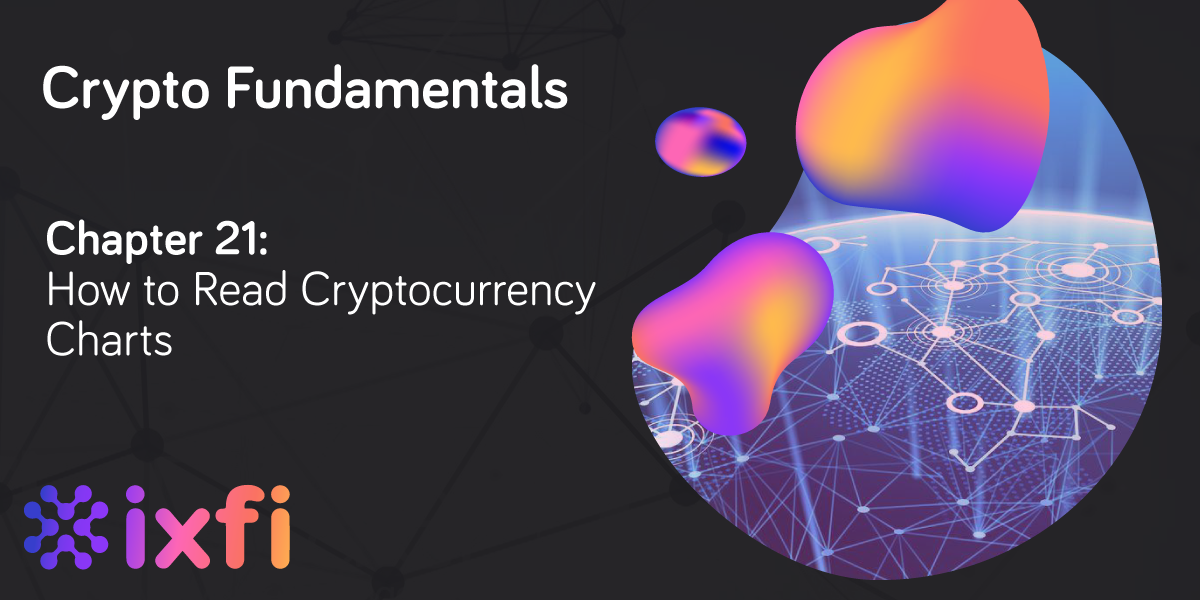For traders, a proper reading of charts is the skill they need to develop to be successful. Chart-reading can make the difference between a profitable transaction and a losing one. We’ll be covering exactly this in this chapter of Crypto Fundamentals, so read on to learn how you can improve your chart-reading skills.
Charts across the market are recording live price fluctuations and cryptocurrencies’ development, along with their volatility, volume, and other indicators.
At the same time, charts keep a registry with all this information so users can determine wherever cryptocurrencies will grow in price, suffer a correction, or how well they behave.
Moreover, charts represented through Japanese candlesticks usually form diverse models that can help us figure out trends or price changes before they happen. Recognizing these models will help us obtain advantages regarding cryptocurrency trading since our technical analysis will be explicit and straightforward. One of the main advantages of charts is that traders find good entry points for positions with lower risk and a greater chance of positive return.
What is technical analysis?
Technical analysis is when a trader analyzes a price’s history to identify opportunities in trends visible on the chart. It’s considered that an asset’s price history has something to say about its future. Besides price history, traders can profit from modern charts and indicators that provide information and details about an asset’s evolution. Analyzing what happened, traders try to guess what will happen next and calculate their moves, positions, risk, and profit levels.
Technical analysis can be applied to the equity market, real estate, and crypto projects. TA contrasts with fundamental analysis, which focuses on a company’s financial numbers or a project rather than its price history.
What is a trading chart?
Trading charts represent assets’ price sequences, drawn over a certain period, where the vertical axis designates the price scale and the horizontal scale defines the time scale. Prices are placed from left to right on the horizontal scale, the most recent price being the furthest point on the right. Traders can focus on a shorter or more significant period, depending on the time interval they plan to trade on and personal strategies. Trading charts offer multiple possibilities to visualize prices and fluctuations: through candles, lines, or bars.
How do I read a chart?
Charts may look complicated to new traders, but they are simple to read. The simple, automated charts show bars in two colors: green, signaling ascending moves, and red, representing price downfall.
Linear Charts
There are linear charts where several opening and closing points are united through a line. These allow traders to see how the price behaved during a period, usually a long one. Linear charts are more straightforward and represent an excellent start to learning how to read charts.
Bar Charts
Linear charts show the closing price of an asset over a certain period but lack details, so most retail traders will prefer bar or candlestick charts so they won’t lose essential signals. As a result, bar charts are amongst the most popular. These allow traders to visualize the highest, lowest, and closing prices. Opening price, meaning the starting price of an asset during a known period, is not necessarily shown on the bar chart, but it can be used, depending on the used platform.
The advantage of these charts is that they can deliver a lot more information over a smaller period without crowding the area with too much detail. Like linear charts, green bars indicate growth when the price closes above the opening price, while red bars mean corrections.
Candlestick Charts
Candlestick charts are very similar to bar charts and work using the same logic but offer more details because they always show the opening price of assets. Here, besides the candlestick’s body, we also have wicks (or shadows) — lines that reach higher or lower than the candlestick’s body that defines prices’ limits.
Support and Resistance Levels
By verifying charts, traders can figure out maximal price levels and barriers that stop the price from growing or falling further (or uncontrolled). Analysts use support and resistance levels from asset charts to identify where the price is going next and how long it will continue a trend. The support line is usually down, where the price hits a wall, and the trend is expected to revert. On the other hand, the resistance line is upward, where the price usually finds a maximum and should follow a correction.
Knowing your charts can be a life-saver, or more precisely, a money-saver. Don’t just sit idly on this information and put it to good use on a safe, reliable and complete platform. Register on Your Friendly Crypto Exchange to take your trading to the next level.
Disclaimer: The content of this article is not investment advice and does not constitute an offer or solicitation to offer or recommendation of any investment product. It is for general purposes only and does not take into account your individual needs, investment objectives and specific financial and fiscal circumstances.
Although the material contained in this article was prepared based on information from public and private sources that IXFI believes to be reliable, no representation, warranty or undertaking, stated or implied, is given as to the accuracy of the information contained herein, and IXFI expressly disclaims any liability for the accuracy and completeness of the information contained in this article.
Investment involves risk; any ideas or strategies discussed herein should therefore not be undertaken by any individual without prior consultation with a financial professional for the purpose of assessing whether the ideas or strategies that are discussed are suitable to you based on your own personal financial and fiscal objectives, needs and risk tolerance. IXFI expressly disclaims any liability or loss incurred by any person who acts on the information, ideas or strategies discussed herein.


